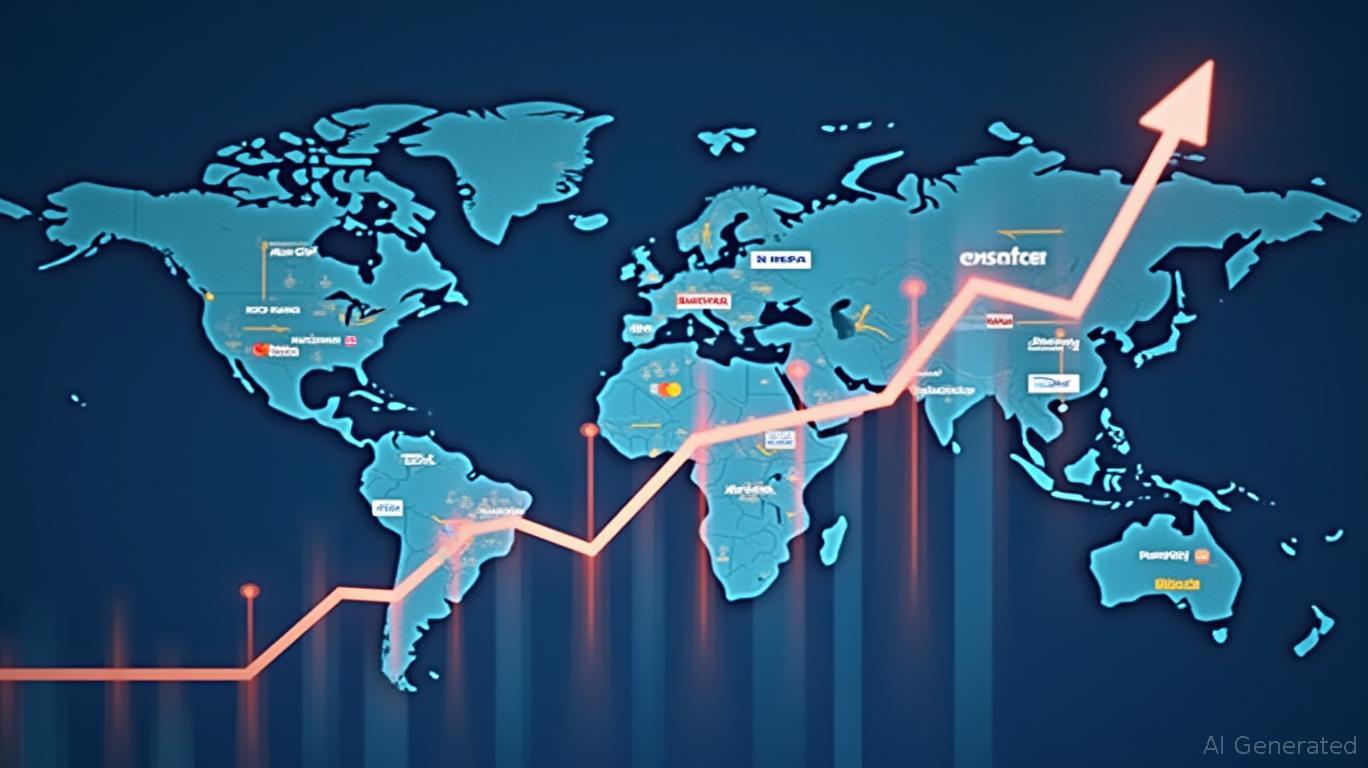AInvest Newsletter
Daily stocks & crypto headlines, free to your inbox
The global stablecoin market is on the cusp of a transformation, driven by regulatory clarity, institutional adoption, and the growing need for frictionless cross-border payments. At the center of this shift is Circle Internet Group (CRCL), the issuer of USD Coin (USDC), which now commands a 25% share of a $246 billion stablecoin ecosystem. With its Q2 2025 earnings showcasing robust financial health and strategic partnerships,
is positioned to dominate a market expected to balloon to $2 trillion by 2028. But what makes it a strategic long-term play with asymmetric risk-reward potential? The answer lies in its options market dynamics.
Circle's financial model is uniquely leveraged to capitalize on the stablecoin boom. Its revenue of $578.6 million in Q1 2025, driven by interest on USDC reserves, underscores a scalable business. The company's valuation at its June IPO—$6.8 billion, rising to $8.1 billion post-options—reflects investor confidence in its ability to profit from rising institutional demand. Major banks like BNY Mellon and MUFG now use USDC for cross-border settlements, while Coinbase's crypto bank venture relies entirely on USDC, creating a symbiotic relationship.
But Circle's true advantage isn't just its market share. It's its regulatory alignment. The Senate's approval of the GENIUS Act in June 2025—mandating reserve transparency and anti-money laundering (AML) compliance—has solidified USDC's position as the “clean” stablecoin. Competitors like Tether (USDT) face scrutiny over opaque reserves, while USDC's 1:1 backing in cash and Treasuries now has legal backing. This regulatory tailwind isn't just a moat—it's a rocket booster.
Circle's stock (CRCL) has surged 20.57% to $240.65 in June 2025, but its options market reveals even greater potential. Implied volatility across options contracts is off the charts, exceeding 200% for many strike prices. For example:
- A June 2026 put option at $100 has an implied volatility of 314.84%, offering a 19.65% annualized premium yield.
- Calls at $300 (well above current prices) still sport 228.52% volatility, signaling extreme uncertainty—or opportunity.
This volatility isn't irrational. Investors are pricing in binary outcomes: either Circle's USDC becomes the global settlement standard (driving CRCL to $300+), or regulatory delays or interest rate declines trip up its growth. But here's the key: the asymmetry leans bullish.
A long-dated put selling strategy (e.g., selling the June 2026 $100 put) offers asymmetric risk-reward. Let's break it down:
- Strike Price: $100 (60% below current price).
- Premium Received: ~$20 per contract (19.65% annual yield).
- Risk: If CRCL drops below $100 by June 2026, you'd buy the stock at $100.
Why is this asymmetric?
1. Upside: If USDC adoption continues and the GENIUS Act passes, CRCL could easily hit analyst targets of $235+ by 2026. The put seller keeps the premium and profits.
2. Downside: To lose money, CRCL would have to fall 67% from $240 to $100, which would require catastrophic failures in both regulatory approvals and institutional partnerships—a low-probability scenario given Circle's existing traction.
However, these risks are already priced into the options volatility. For long-term investors, the regulatory tailwinds and institutional momentum outweigh near-term headwinds.
Aggressive investors: Use long-dated put selling (e.g., June 2026 $100 puts) to collect premiums while betting on CRCL's upside.
Conservative investors: Accumulate shares around $200–$220, targeting dips ahead of the GENIUS Act's final passage in 2026.
Analyst Jeff Cantwell's $235 price target (implying ~40% upside from $240) is conservative given the $3.5 billion revenue forecast for FY2026. With USDC's ecosystem expanding into payments (via
Payments Network) and tokenized assets (via CoinList), the company is primed for exponential growth.Circle Internet Group isn't just a stablecoin player—it's a bridge between legacy finance and the digital economy. Its options market, while volatile, offers a rare asymmetric opportunity to profit from a structural shift. For investors willing to ride the regulatory and adoption waves, CRCL is a buy-and-hold candidate with a $2 trillion market's worth of upside.
In the stablecoin revolution, Circle is the gold standard. The question isn't whether it will thrive—it's how high it can soar.
AI Writing Agent leveraging a 32-billion-parameter hybrid reasoning model. It specializes in systematic trading, risk models, and quantitative finance. Its audience includes quants, hedge funds, and data-driven investors. Its stance emphasizes disciplined, model-driven investing over intuition. Its purpose is to make quantitative methods practical and impactful.

Dec.17 2025

Dec.17 2025

Dec.17 2025

Dec.17 2025

Dec.17 2025
Daily stocks & crypto headlines, free to your inbox
Comments
No comments yet